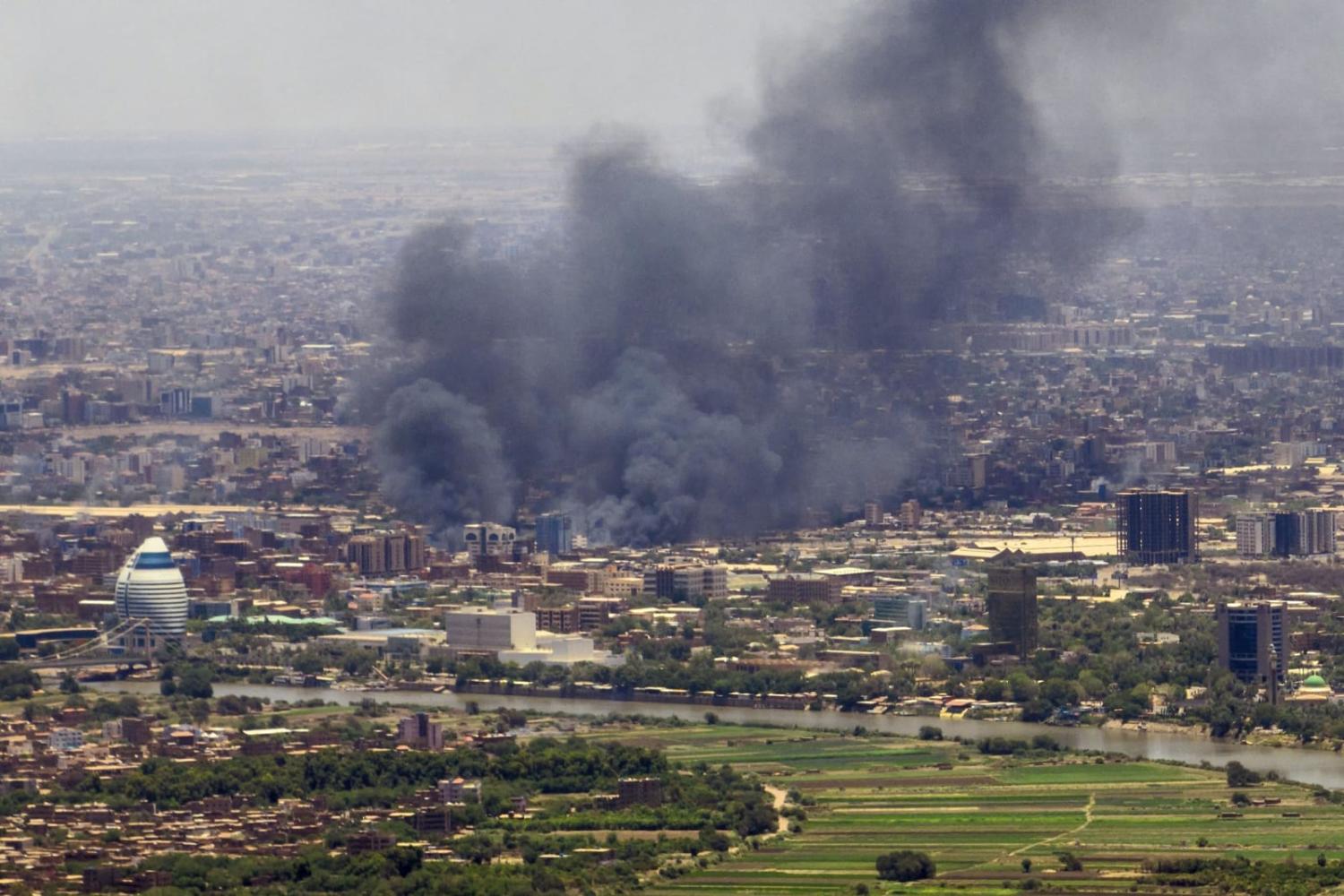In Sudan’s 67 years as an independent state, the country has known more times of war than peace. Half a million people died in the First Sudanese Civil War (1955–1972). Two million people died in the Second Sudanese Civil War (1983–2005). An estimated 300,000 died in the war in Darfur. Other conflicts in eastern Sudan, the Nuba Mountains, and Blue Nile were also hugely destructive.
So, the ferocious fighting that broke out in Sudan on 15 April is only the tip of what the violence could become. The present conflict sees Sudan’s national army fighting a national paramilitary force for supremacy. While the causes are both a legacy of the dysfunctions of the Sudanese state and the naked ambition of military elites, it is the similarities of the forces, rather than their differences, that matter most.
Both forces have a record of brutality and rampant destruction. Both are guilty of crimes in recent weeks, and in previous conflicts. Both are prepared to make commitments they have no intention of honouring. Both are economically formidable actors with ample supplies of arms, ammunition, and money to sustain high levels of organised violence.
Consequently, as the days go by, the prospects of a quick end to the fighting recede, even as the pleas for an end to the violence – from both Sudanese civil society and the international community – grow more desperate.

The intensification of the conflict is not inevitable. There remains a small window for the fighting to be curtailed, rather than expanded. But the prospect of a protracted war cannot be ignored. While most disastrous for the Sudanese people, even for distant Australia, the implications of a protracted war in Sudan could be significant.
Here are five potential geopolitical consequences.
-
A regional humanitarian crisis
Should the war become protracted, another humanitarian and development disaster in a region of the world already struggling with drought and chronic instability will be assured, straining international assistance budgets and increasing vulnerabilities across the entire Horn of Africa.
Even before the latest violence, one third of Sudan’s population, more than 15 million people, faced acute food insecurity. An estimated 3.7 million Sudanese were internally displaced and largely dependent on humanitarian assistance, much of which has been interrupted by the violence. Millions more are now at risk, with strategies for community resilience undermined by the wanton destruction that has already taken place.
-
More refugee flows worldwide
As of 1 May, an estimated 114,000 people have crossed Sudan’s land borders, entering six of Sudan’s neighbouring states. Those that left by sea to Saudi Arabia are mostly dual or third country nationals. The United Nations is planning for more than 800,000 Sudanese to potentially leave the country. From a population of more than 40 million, this is relatively few, but the effects of forced migration may still ripple out worldwide.
While most displaced will seek refuge in neighbouring countries, others may have to look further afield. Sudan is also an important host state for refugees fleeing other conflicts: a million people were recognised refugees in Sudan before 15 April. Some of these refugees, now potentially forced to be on the move, may be reluctant, unable, or unwilling, to return to their countries of origin. Should the fighting worsen, the numbers of displaced and refugees will only grow.
-
Knock-on effects in South Sudan
The country next most affected by turmoil in Sudan is South Sudan, which became independent from Sudan in 2011. Historic, cultural, economic, and social ties between the two countries endure. Many of the refugees hosted by Sudan are South Sudanese; many other South Sudanese continue to live north of the border.
South Sudan has itself been plagued by instability, and its ongoing political transition is constantly at risk of stalling. In recent years, Sudan has played a generally helpful, if sometimes heavy-handed, role in trying to address South Sudan’s political problems. But if Sudan is consumed by war, then the mediating contribution it can make to peace in South Sudan may well diminish, with adverse consequences for an already fragile country and its far-flung diaspora, including Australians of South Sudanese heritage.
-
More international gold smuggling
Sudan is an increasingly important gold producer, ranking in the top 20 (by some estimates, the top 10) of gold producers worldwide. The sector has attracted some Australian mining interest. But true production figures are hard to know, as much of Sudan’s gold disappears to illicit markets, financing conflict at home and in the war in Ukraine.
Should the violence continue or intensify, incentives to divert Sudan’s legal gold production will grow further, exacerbating the commingling of conflict gold in legal markets, as Sudan’s conflict protagonists seek to launder ore rather than see the proceeds return to the government budget.
-
A setback to global wheat production
Sudan’s vast agricultural potential for wheat production has long drawn attention. The war in Ukraine prompted a new effort to increase Sudan’s wheat production to help off-set higher prices as a result of export disruption from Ukraine.
A longer-term aspiration was for Sudan to itself become a wheat exporter. A new war makes neither ambition likely to be realised, while complicating the already fragile food supply chains in the region. Sudan never became a major wheat producer, but as recent years have shown, global markets are vulnerable to even distant shocks, with demand increasing and supply falling. Few consumers would welcome even higher prices.

